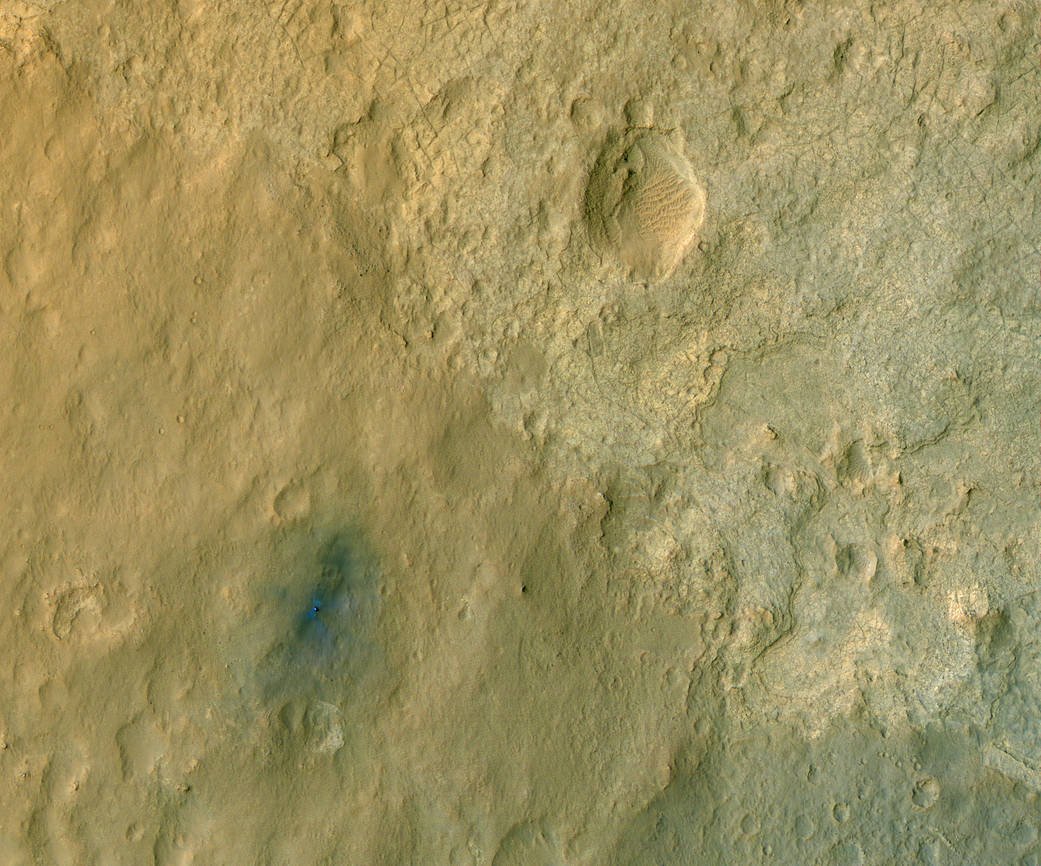
This color-enhanced view of NASA’s Curiosity rover on the surface of Mars was taken by the High Resolution Imaging Science Experiment (HiRISE) on NASA’s Mars Reconnaissance Orbiter as the satellite flew overhead. Colors have been enhanced to show the subtle color variations near the rover, which result from different types of materials.
The descent stage blast pattern around the rover is clearly seen as relatively blue colors (true colors would be more gray).
Curiosity landed within Gale Crater, a portion of which is pictured here. The mountain at the center of the crater, called Mount Sharp, is located out of frame to the southeast. North is up.
This image was acquired at an angle of 30 degrees from straight down, looking west. Another image looking more directly down will be acquired in five days, completing a stereo pair along with this image.
The scale of this image cutout is about 12 inches (31 centimeters) per pixel.
HiRISE is one of six instruments on NASA’s Mars Reconnaissance Orbiter. The University of Arizona, Tucson, operates the orbiter’s HiRISE camera, which was built by Ball Aerospace & Technologies Corp., Boulder, Colo. NASA’s Jet Propulsion Laboratory, a division of the California Institute of Technology in Pasadena, manages the Mars Reconnaissance Orbiter Project for NASA’s Science Mission Directorate, Washington. Lockheed Martin Space Systems, Denver, built the spacecraft.Image credit: NASNASA/JPL-Caltech/University of Arizona


























